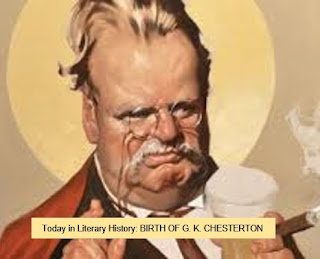TODAY IN LITERARY HISTORY 1864: Lewis Carroll delivers the handwritten manuscript of ‘Alice’s Adventures in Wonderland’ to Alice Liddell.
On November 26, 1864, Charles Lutwidge Dodgson—known to the world as Lewis Carroll—gave Alice Liddell the handwritten manuscript of the story he had first improvised during a July 1862 boat ride near Oxford. Published in 1865 with John Tenniel’s celebrated illustrations, Alice’s Adventures in Wonderland became one of the most culturally influential works of children’s literature, inspiring generations of writers, artists, and scholars.
Few works in English literature have inspired publishers as deeply as Alice’s Adventures in Wonderland. Since 1865, the book has been a showcase for artistic innovation: deluxe Victorian gift editions, Golden Age illustrated versions, Art Nouveau and Art Deco interpretations, and a long tradition of fine-press and private-press printings. Printers have used Alice to display mastery of illustration, type design, paper choice, and binding craft. From Tenniel’s original wood engravings to modern letterpress editions, the story’s imaginative elasticity has made it a beloved proving ground for generations of bookmakers and collectors.
Three of the Most Celebrated Editions of Alice’s Adventures in Wonderland
1. The 1865/1866 First Editions (Macmillan, London)
The original 1865 sheets—withdrawn due to Tenniel’s dissatisfaction with the printing—and the corrected 1866 first published edition remain the foundation of all Alice collecting. Printed by Oxford’s Clarendon Press and illustrated by John Tenniel, these editions set the standard for Victorian gift-book design and are among the most sought-after 19th-century literary firsts.
2. Arthur Rackham’s Illustrated Edition (William Heinemann, 1907)
Arthur Rackham’s interpretation ranks among the greatest artistic reimaginings of Carroll's text. Issued in deluxe signed editions and trade formats, Rackham’s dark, atmospheric drawings introduced an entirely new visual mood—fluid, whimsical, and slightly uncanny—cementing the book as a masterpiece of the Golden Age of Illustration.
3. The Lewis Carroll Centenary Edition (The Limited Editions Club, 1932)
Designed by Frederic Warde and printed by The Lakeside Press, this Limited Editions Club production is a high point of American fine presswork. It features newly reproduced Tenniel illustrations, Warde’s elegant typography, and outstanding craftsmanship in both paper and binding. Collectors prize it for its balance of scholarly fidelity and fine-press aesthetics.
Although we don’t have one of the landmark early editions mentioned above, we do have a remarkable fine-press interpretation that stands firmly in the modern tradition of distinguished Alice printing: the 1983 limited edition produced by The Press of A. Colish in Mount Vernon, New York.
Issued in 975 copies for friends of the press, it was designed by Bert Clarke and set in English Monotype Fournier, then letterpress printed on Ragston text paper—a level of craft that places it squarely within the American private-press renaissance of the late twentieth century. Bound in floral-patterned boards with a gilt-stamped red title label and Tenniel’s classic illustrations inset on the upper cover, the edition reflects the meticulous standards that made A. Colish one of the country’s most respected fine presses. For collectors, it represents a beautifully made, thoughtfully designed homage to Carroll’s masterpiece—faithful to Tenniel’s imagery and produced with the typographic clarity and tactile quality only true letterpress can provide.





Comments
Post a Comment